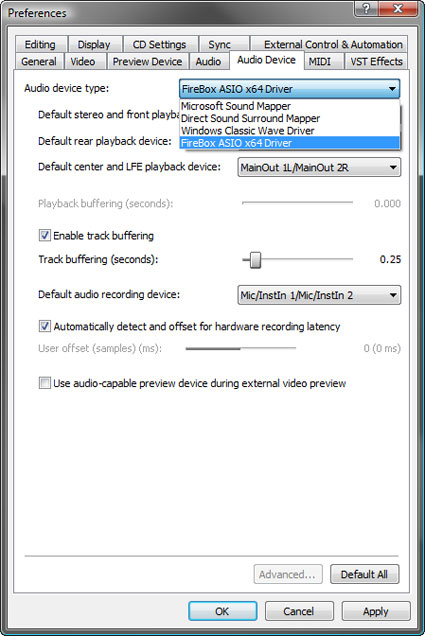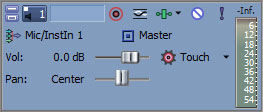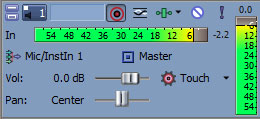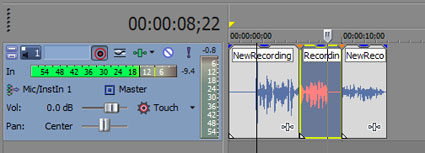How to Clean Old Vinyl Records
Cleaning vinyl records will keep them sounding great for a very long time. But you need to know how to clean your records properly or you could damage your albums. Don't worry, it's easy to clean vinyl records.
First thing to know about cleaning vinyl records is that playing a dirty record will damage the vinyl and negatively affect the sound quality. So keep those records clean.
The next thing to know about how to clean vinyl records is that there are all sorts of ways to clean albums and all of them are imperfect.
The best advice on cleaning records is this : Play it safe. Be conservative. For better results - spend accordingly.
Even though there is no method that will truly "purify" a record, there are plenty of ways to remove dirt and get better sound.
Here are some tips on how to clean records properly as well as a list of vinyl record cleaners and products to help you with your cleaning.
Vinyl Record Cleaning Tips
Introduction to Vinyl Record Cleaning
The Best Way to Clean a Vinyl Record
How to Clean Records with Soap and Water
Vinyl Record Storage Tips
Vinyl Record Cleaning Products
Return to Vinyl Record Fair Home Page
Vinyl Record Cleaning Quick Tips
These quick tips on cleaning vinyl records will help guide you through the mysterious and often misleading world of vinyl record cleaning. If you are new to vinyl records and not sure how to clean vinyl records, this list of cleaning tips is an excellent place to start.
- Cleaning a record with a carbon fibre brush before and after play is the best way to keep your records clean and sounding great.
- Don't take any unnessary risks. Play it safe.
- If you are looking for the ultimate heights in acoustic clarity, buy a professional record cleaning system.
- There is no way to truly "purify" a record and return it to some sort of virgin state.
- Use distilled and de-ionized water.
- Always remove surface debris and dust before any deep clean.
- A carbon fibre brush is only meant to brush gently over the surface. They are not meant to enter the grooves of the record.
- A good vinyl record vacuum cleaner is the best way to clean a record.
- Record cleaning kits available at your local record store do an excellent job and cost under $100.
- No amount of cleaning will repair a damaged record.
- New records are not necessarily clean records. Clean your records before the first play.
- Less friction is better. Be gentle with your albums.
- If you are going to use a cloth from home, make sure that it is lint free.
- A turntable or stylus in bad shape will damage your record.
- Almost every cleaning solution leaves a residue. Even alcohols contain a small amount of grease.
- Don't use rubbing alcohol to clean a vinyl record. It takes away the shine. It also will damage 78's.
Keep reading for more information on how to clean vinyl records.
Vinyl Record Cleaning for Beginners

The art of cleaning vinyl records tends to lend itself to wide-spread speculation. There is almost a pseudo-science associated with it.
This happens when curating any fine object with delicate features where cleaning can enhance its qualities and increase its value.
We've all heard about the strange miracle treatments for shiny shiny hair or silky silky skin. Vinyl record cleaning methods are no different.
There are a plethora of vinyl record cleaning tricks out there. Some record cleaning tricks don't do anything. Most are more work than they are worth. Some will flat out damage your records.
The best approach to cleaning and caring for vinyl records is to take a conservative approach. You'll find that the most effective methods don't require fancy tricks or expensive solutions.
Play it safe. Your vinyl records will shine and sound like new for years.
PS. Don't wash your hair in coconut milk. It'll make your hair greasy for weeks.
How to Handle your Vinyl Records
The best way to clean a vinyl record is to make sure your record doesn't get so darn dirty in the first place.
So rule number one is to keep your filthy paws off the sensitive parts.
Your fingers contain acids and oils that will wear away at the vinyl - chemically.
So however you avoid touching the playing surface of the record is fine.
There isn't really a proper way to hold a vinyl record. Just like there isn't a proper way to drink wine. There are only consequences... like hangovers.
Just take it easy and use two hands. Two hands to hold on to a record. You only need one hand to drink wine... unless you're in church.
But it's simple. Hold the vinyl record by the places that don't hold information and it may help keep the record in better shape over time. That's all there is to it.
Preparing a Vinyl Record for Play
In an ideal world, it is the best practice to clean a vinyl record before and after play to prevent the build up of dust and grime.
A carbon fibre brush passed lightly along the playing surface will do the trick.
If you do not have a carbon fiber brush, try to find a cloth for cleaning glasses or cell phone screens. You know the ones I'm talking about.
Pass the cloth gently over the surface of the vinyl record in a circular motion along the grooves.
Be gentle. We don't want to push dirt into the grooves or drag particles across the surface of the album.
This is simply to brush off loose particles.
For a deeper clean, use the simple, safe and cheap vinyl record cleaning method described below or use a record cleaning kit from your local record store.
Cleaning New Records
Even brand new records should be cleaned before their first trip around the turntable.
New records come coated in a mold release compound that should be cleaned off if you wish to achieve the highest quality of sound from your vinyl record.
Damaged Vinyl Records
Sometimes all the cleaning in the world won't return a vinyl record to its former glory. Unfortunately there is little you can do about it.
The good news is that a light scuff or visible scratch on your vinyl won't necessarily cause your record to skip. You'll be able to listen to your vinyl record with only minor deficiencies in sound quality.
If you can feel the scratch with your finger tips, however, than you know that it has irrepairably changed the surface of the record and it has a very good chance of skipping.
Turntables and Cartridges
Your turntables and cartridge will have an effect on the condition of your vinyl records.
The tip of the stylus should be kept clean.
The stylus is the part of the cartridge that drags across the surface of the vinyl record to create sound.
Since it is essentially cleaning out grooves in the record while it plays, there is a tendency for it go gather dust and small fibers.
Take a look at the stylus before playing a record. If it is dirty just blow off any junk gently. No spitting now.
Every stylus should be replaced at some point. The more you spend on your cartridge the longer they will last - theoretically.
Playing clean records will help too.
But respect the stylus. It is a little diamond scraping across your albums.
And since the point of contact is so small, the pressure that the little diamond is placing on your record is somewhere in the tens of thousands of pounds per square inch. Respect.
The Best Way to Clean Records and Why

Straight up, the best way to clean a vinyl record/lp/album is to use a machine called a vinyl record vacuum cleaner.
While you may not be in the market for such a contraption, to understand why this device works so well will help you understand record cleaning in general and help you devise your own opinion on the serious matter of vinyl record cleansing.
Suffice to say, this is not your everyday household vacuum cleaner but one designed specifically to clean vinyl records. It costs thousands of dollars for a good one and they are infamously noisy. But this is the best way to clean a record.
You'll find machines like this at the Library of Congress, for example, where they must clean and maintain a collection of over 125,000 vinyl records. If you don't have a massive collection and/or you aren't fanatic about cleanliness, you can probably do without a vacuum machine. There are many other more affordable ways to clean your records very very well. But don't be shy, it's alright to be nuts about cleanliness. Because in the world of vinyl records, cleanliness equals acoustic clarity.
Now, whether you are using a fancy vacuum machine or you are washing your records at home with household items, the process always begins the same way. Before any deep clean, you want to remove as much of the loose dirt and debris from the surface as possible. Failure to do so may trap/wedge those particles deep in the bottom of the grooves. Not only does that make the album harder to clean, but you may also damage the record if any of those particles happen to be harder than the vinyl.
 For the most part, it is these microscopic culprits that have lodged themselves into the grooves of the record and now cause your record to click, crackle and pop when the stylus skips over them. This noise is referred to as a "conchoidal shock wave" but I like to call it "the sound of dirt."
For the most part, it is these microscopic culprits that have lodged themselves into the grooves of the record and now cause your record to click, crackle and pop when the stylus skips over them. This noise is referred to as a "conchoidal shock wave" but I like to call it "the sound of dirt."
Take a look at the picture on the right of the record's surface under a microscope and you'll see how tiny things could easily get stuck in the valleys of the album.
So yes, it's only after the surface has been cleared of particles that it is safe or sensible to try for a deeper clean. Use a proper record cleaning brush for this task (available at most record stores), but if you don't have one available, you can get away with using a very soft cloth. Just remember to be gentle... no hard rubbing.
After the surface debris has been cleared, the record is ready for the vacuum record cleaning machine.
There are several different vacuum record cleaning machine designs on the market but they all clean records in pretty much the same way - they suck.
Vacuum record cleaners suck the dirt right outta the grooves. This way, the record is cleaned using as little friction as possible. And without friction, there is no danger of dragging particles across the album or re-introducing contaminates from a soiled cloth.
Beyond sucking, these machines usually do a couple more things that help the cleaning process along. They brush and they spin.
The brush is not utilized how you might expect. Remember, the surface of the record has already been cleared of debris. And brushes, even ones meant for vinyl records, are not intended to enter the grooves of the record. The main function of the brush on a vinyl record cleaning machine is to apply a thin and even layer of cleaning fluid to dissolve oils and/or to protect the record from the vacuum. The vacuum then sucks the dirt along with the cleaning solution right off of the surface of the record leaving it dry and shiny.
Besides being a practical point of engineering, record cleaners also utilize spin to help them along. Generally speaking, spin helps provide an even clean, however, some designs use centrifugal force to dry the record. Spin is arguably the best way to dry a record because, again, it does not employ any friction.
And there you have it, vinyl record vacuum cleaners work as well as they do because they provide an even and deep cleaning without too much touching.
Any record cleaning method that follows that principle and gets the job done will receive high grades.
That said, be weary of techniques that involve a lot of contact/friction or the use of chemicals.
Simple, Safe, Cheap Record Cleaning
This is a simple, cheap and fairly safe way to clean a vinyl record. There is very little chance of damaging your albums. And, it's cheap because you can get your records clean with everyday household items.
Before you start cleaning, know this, soap and water is not the best way to clean a record for two reasons :
- Even the best soaps leave a residue (so make due without it if possible) and;
- It's better to minimize or avoid physical contact with the surface of the record.
But if you need to clean a record and you aren't too fussy, this will do the trick.
What you Need to Clean Vinyl Records at Home with Soap and Water
- Dish Soap (Not the best solution but it will do if you have dirty records and little cash)
- A Bowl
- Warm Water (Distilled and De-Ionized if Possible)
- A Soft Cloth - Lint Free
- A Carbon Fibre Brush (Dry) or Cloth for Cleaning Bifocals

Step 1 : Remove Dust
You should remove dust and loose particles from the surface before any deep cleaning.
A carbon fibre brush passed lightly along the playing surface will do the trick.
The brush is not intended to enter into the grooves of the record.
The carbon bristles help disperse any static charge that will cause dust particles to stick to your record.
If you do not have a carbon fiber brush, try to find a cloth for cleaning glasses or cell phone screens. You know the ones I'm talking about.
Pass the cloth over the surface of the vinyl record gently in the direction of the grooves.
Be gentle. We don't want to push dirt into the grooves or drag particles across the surface of the album.
This is simply to brush off loose particles. For a deeper clean, we'll use some good old fashion soap and water.
Step 2 : Prepare the Cleaning Solution
This is just soap and water. But try cleaning your records with just the distilled warm water. All soaps and even most alcohols will leave a residue. That's not to say that you can't use any solution other than pure water - just use it sparingly and rinse well. If you do that, a little bit of soap to help break down some of the grease won't hurt.
Put the warm water in the bowl.
The water shouldn't be too hot.
Some vinyl record collectors will suggest using very hot water. While, yes, hot water does take off dirt more readily. We all have experienced that. Heat is not good for vinyl records. Even though the melting point of poly-vinyl-chloride may be well above that of boiling water. There really isn't any reason to risk your hands or your records with extreme conditions.
The water just needs to be warm enough so that the soap can dissolve easily.
Mix in a small amount of dish soap and stir. Use as little soap as possible. In fact, try not use any at all.

Step 4 : Clean the Record
The cloth you use to clean the record should be soft and absorbant. Do not use rags or old t-shirts.
The clothes used for polishing cars work really well. They only cost a few bucks, they are reusable and they can be found in any automobile accessories department.
Wrap the cloth over your index finger and dip your finger tip into the bowl of warm lightly-soaped water.
The cloth souldn't be wet enough to leave any wetness on the record. Therefore, drying the vinyl record after cleaning should be a non-issue.
Now, gently rub your cloth-covered soapy finger over the vinyl record in a circular motion along the grooves.
Go in concentric circles clockwise from the center around the record until you reach the outside edge.
Then go in the opposite direction - counter-clockwise around the record spiraling inwards towards the label - like the stylus does.
Clean the record evenly.
Keep your finger tips flat. Do not use your nails.
Do not get the label wet. If there is some wetness on the record, just use a clean part of your cloth to gently absorb it then brush the record with your carbon fibre brush.
Step 5 : Repeat
Once your water or cloth is dirty, it's time to start again. Get a new bowl of warm soapy water and use a clean section of your cloth.
Step 6 : "Rinse"
Do one final pass using only the distilled water just to make sure there isn't any soap residue left behind.
If this doesn't work to your satisfaction or you have a large number of records to clean, use a professional record cleaning kit or record cleaning machine.
Keep in mind though, regular maintanance is the best way to keep a vinyl record collection in good shape.
Vinyl Record Storage Tips

Cleaning your vinyl records is just half the battle. Any GI Joe will tell you that "knowing" is the other half. More specifically, it is knowing how to store vinyl records properly that will win the war.
First, keep your vinyl records in a cool dry place. That's a great start.
Also, keep your records stacked vertically.
The picture on right demonstrates the proper way to stack records.
Never lay the vinyl records flat. And especially don't stack your vinyl records one on top of the other. This can cause the vinyl record to warp over time.
Do not squish the records together too tightly. Give them some breathing room.
Always use plastic sleeves intended for storing vinyl records.
Any other covering will damage your vinyl record - chemically. That includes the paper sleeves that often come with the album!
Vinyl Record Cleaning Products
If you have a lot of vinyl records to clean then you may be interested in picking up a record cleaning kit or one of the many products designed specifically to clean vinyl records.
You can check out the Georgia Straight's contest page near fair time for a chance to win a Spin Clean Kit donated by Red Cat Records in Vancouver,Canada.

Record Cleaning Kits
Price Range : $50 - $200
Manufacturers : Spin Clean, Rek-O-Kut, Gruv Glide, UltraBit, Stanton, Audio-Technica
If you have a lot of records to clean or just want a great cleaning job, you may be interested in purchasing an affordable vinyl record washing kit.
There are record cleaning machines that cost a fortune but these have become rather rare. Why spend thousands of dollars when you can get a great clean from one of the low-cost washing kits?
Most used record stores get by just fine with a record washing kit that costs somewhere in the 100 dollar range.
Pick these up anywhere that sells stereos and turntables. Many vinyl record stores will also carry these record washing kits.

Carbon Fiber Brush (Dry)
Price Range : $10 - $50
Manufacturers : Stanton, Audioquest, Pro-Ject, clearaudio, AcousTech, Hunt EDA
Your most common record cleaning tool is the Carbon Fiber Brush. Hail to the inanimate carbon fibre brush.
It is the best way to remove dust safely from your records.
The carbon bristles help disperse any static charge that will cause dust particles to stick to your record.
They are available just about anywhere that sells turntables.
You can expect to pay about 20 dollars for a standard brush.
Use the brush like a zamboni. Gently glide the brush around the vinyl record as if the brush was the second hand and the vinyl record was a big clock.
Be gentle with the brush.
The brush is not intended to enter into the valleys of the record.
And always brush with the grooves man... with the grooves.
Reference:
http://www.vinylrecordfair.com/clean_vinyl_records.html#vinyl-record-cleaning-tips



 The art of cleaning vinyl records tends to lend itself to wide-spread speculation. There is almost a pseudo-science associated with it.
The art of cleaning vinyl records tends to lend itself to wide-spread speculation. There is almost a pseudo-science associated with it.
 Straight up, the best way to clean a vinyl record/lp/album is to use a machine called a vinyl record vacuum cleaner.
Straight up, the best way to clean a vinyl record/lp/album is to use a machine called a vinyl record vacuum cleaner.
 For the most part, it is these microscopic culprits that have lodged themselves into the grooves of the record and now cause your record to click, crackle and pop when the stylus skips over them. This noise is referred to as a "conchoidal shock wave" but I like to call it "the sound of dirt."
For the most part, it is these microscopic culprits that have lodged themselves into the grooves of the record and now cause your record to click, crackle and pop when the stylus skips over them. This noise is referred to as a "conchoidal shock wave" but I like to call it "the sound of dirt."

 Cleaning your vinyl records is just half the battle. Any GI Joe will tell you that "knowing" is the other half. More specifically, it is knowing how to store vinyl records properly that will win the war.
Cleaning your vinyl records is just half the battle. Any GI Joe will tell you that "knowing" is the other half. More specifically, it is knowing how to store vinyl records properly that will win the war.







